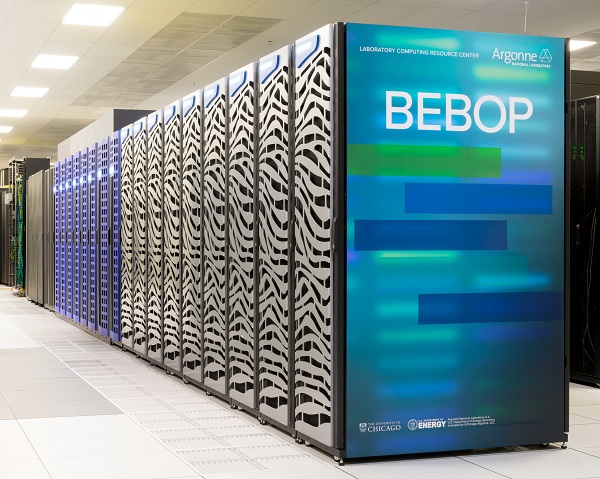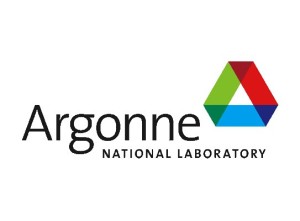
Argonne National Lab’s Bebop supercomputer
By supercomputing standards, Argonne National Lab’s Bebop (stood up in 2017, 1.75 teraflops, bumped off the Top500 list after the June 2019 ranking) seems something of a second-tier player. But veteran, formerly non-Top500 systems like Bebop can still take a star turn, as shown by the results of a research team from Northern Illinois University (NIU) that, with the system’s help, identified an electrocatalyst that they say converts carbon dioxide (CO2) and water into ethanol.
Ethanol, of course, is an additive in U.S. gasoline that reduces greenhouse gas emissions. It’s also widely used as an intermediate product in the chemical, pharmaceutical and cosmetics industries. The report on NIU’s work, first made in an NIU laboratory and studied in detail at Argonne, is published in the July 27 issue of the scientific journal, Nature Energy.
“With this research, we’ve discovered a new catalytic mechanism for converting carbon dioxide and water into ethanol”, said Tao Xu, a professor of chemistry specializing in nanotechnology at NIU. “The unique synthetic method for production of electrocatalysts developed in our NIU lab enables a crucial dynamic interaction between the catalytic metal atoms and the carbon substrate that can efficiently orientate the electrochemical reaction to produce a range of desired organic fuels.”
“The process resulting from our catalyst would contribute to the circular carbon economy, which entails the reuse of carbon dioxide”, co-author Di-Jia Liu said. This process would do so by electrochemically converting the CO2emitted from industrial processes, such as fossil fuel power plants or alcohol fermentation plants, into valuable commodities at reasonable cost, according to NIU.
Catalysts speed up chemical reactions and form the backbone of many industrial processes. For example, they are essential in transforming heavy oil into gasoline or jet fuel. Today, catalysts are involved in over 80 percent of all manufactured products.

The team’s research benefited from two DOE Office of Science User Facilities at Argonne – the Advanced Photon Source (APS) and Center for Nanoscale Materials (CNM) – as well as Bebop, housed at Argonne’s Laboratory Computing Resource Center (LCRC).

These data along with high-resolution electron microscopy at CNM and computational modelling using the LCRC revealed a reversible transformation from atomically dispersed copper to clusters of three copper atoms each on application of a low voltage. The CO2-to-ethanol catalysis occurs on these tiny copper clusters. This finding is shedding light on ways to further improve the catalyst through rational design.
The team includes four NIU scientists. It was led by NIU’s Tao Xu and Di-Jia Liu, a senior chemist in Argonne’s Chemical Sciences and Engineering division and a UChicago CASE scientist in the Pritzker School of Molecular Engineering, University of Chicago.
Support for the research came from Argonne’s Laboratory Directed Research and Development (LDRD) fund provided by the DOE Office of Science and from the DOE Office of Basic Energy Sciences.
source: Northern Illinois University



